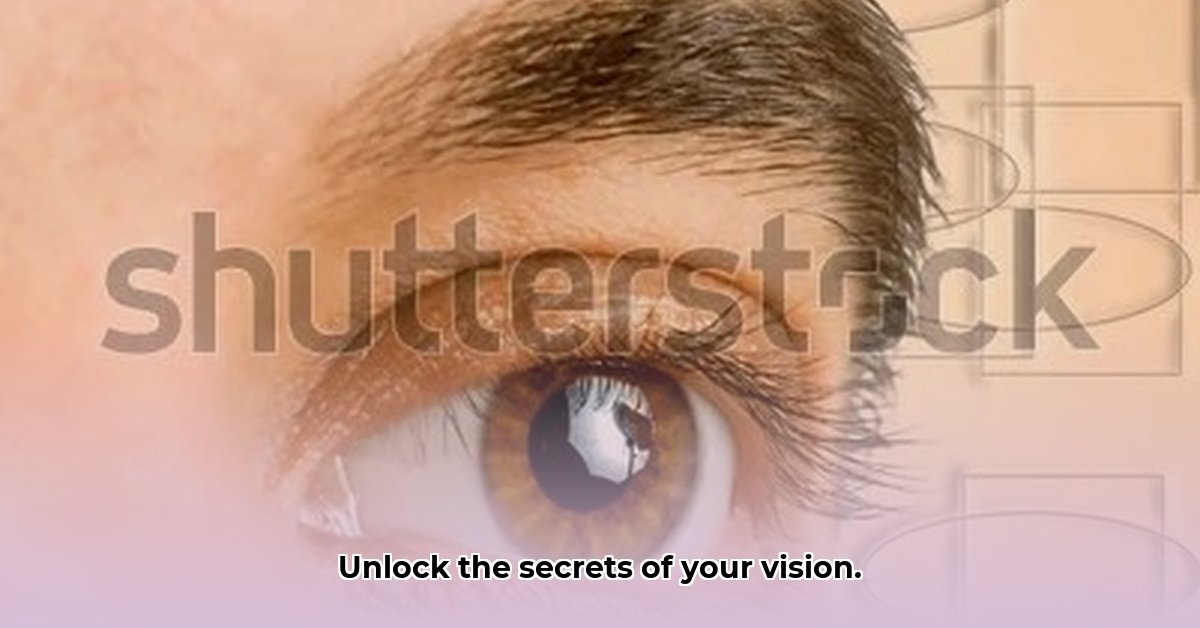Your eyes are indispensable for navigating the world, offering a vibrant tapestry of sights. Maintaining their health is paramount for overall well-being. This guide provides a comprehensive exploration of the eye’s intricate components, their functions, and potential ailments, empowering you to proactively safeguard your vision for years to come. We will cover common eye challenges and preventative measures to keep your vision sharp and understand the need for proper eye protection. For more information on eyeglass protection, check out this helpful resource on eyeglass care.
Eyepart Exploration: A Detailed Look
Understanding the structure of the eye is key to maintaining healthy vision. Each component plays a unique role, and knowledge of these roles can help you better protect your eyesight. This article provides an in-depth exploration of the major parts of the eye, the problems that may arise, and preventative steps.
The Cornea: Your Eye’s Clear Window
The cornea, the clear, dome-shaped front window of your eye, bends (refracts) light as it enters, initiating the focusing process. This refraction is crucial for focusing images onto the retina. Damage to the cornea can cause blurry vision, pain, and sensitivity to light. Conditions like corneal ulcers (sores), keratoconus (thinning and bulging), and Fuch’s dystrophy (progressive corneal swelling) can severely distort vision. Ophthalmologists use specialized tools like corneal topography (3D mapping) and pachymetry (corneal thickness measurement) to assess corneal health.
While corneal issues can affect anyone, certain conditions are more common in specific age groups or populations. For instance, keratoconus often presents in adolescence or early adulthood, while Fuch’s dystrophy typically affects older adults. Treatment options range from lubricating eye drops to specialized contact lenses, collagen cross-linking (for keratoconus), and ultimately, corneal transplants in severe cases. Advances in surgical techniques, such as partial-thickness corneal transplants, have improved outcomes and reduced recovery times.
The Iris: The Colorful Light Regulator
The iris, the colored part of your eye (brown, blue, green, or hazel), controls the size of the pupil, regulating the amount of light entering the eye, much like the aperture of a camera. This automatic adjustment is a remarkable example of the body’s adaptability, allowing us to see comfortably in varying light conditions. The iris contains muscles that contract or dilate to change the pupil size.
Iritis (also known as anterior uveitis), an inflammation of the iris, causes pain, redness, light sensitivity, and blurred vision. It requires careful diagnosis and treatment by an eye doctor to prevent complications such as glaucoma or vision loss. Iritis isn’t tied to a specific age but can be linked to autoimmune conditions like rheumatoid arthritis or ankylosing spondylitis, where the body mistakenly attacks healthy tissues. Treatment focuses on reducing inflammation with corticosteroid eye drops and managing pain with pupil-dilating drops.
Heterochromia, a condition where the irises are different colors, is usually harmless but can sometimes indicate an underlying medical condition.
The Pupil: Your Eye’s Adjustable Aperture
The pupil, the black dot in the center of your iris, is an opening that allows light to pass through to the back of the eye. Its size changes automatically, becoming smaller in bright light and widening in dim light, a completely involuntary process controlled by the iris muscles. This pupillary reflex is essential for optimal vision and protects the retina from excessive light exposure.
Abnormal pupil reactions, such as unequal pupil sizes (anisocoria) or sluggish responses to light, can indicate underlying medical conditions needing attention, including neurological disorders, head trauma, or medication side effects. Eye doctors check pupil reactions during routine exams because they reveal neurological function, allowing them for proactive eye protection and early detection of potential problems. Pupil dilation is also used during eye exams to allow a better view of the internal structures of the eye.
The Lens: The Fine-Tuner of Focus
Located behind the iris and pupil, the flexible, transparent lens works with the cornea to fine-tune the focus of light onto the retina, enabling clear vision at various distances. Like a zoom lens, it adjusts focus from near to far objects through a process called accommodation, changing its shape with the help of the ciliary muscles.
Cataracts, a clouding of the lens, are a common cause of blurry vision, glare, and difficulty seeing at night, especially in older adults. Accurate lens assessment is essential for ophthalmologists managing vision problems. Cataracts are generally age-related, developing gradually over time due to protein aggregation within the lens; however, they can also be caused by trauma, certain medications, or underlying medical conditions like diabetes. Cataract surgery, where the clouded lens is replaced with an artificial intraocular lens (IOL), is a common and highly effective solution, restoring clear vision in most cases. Different types of IOLs are available, including monofocal, multifocal, and toric lenses, to correct various vision problems.
Presbyopia, the age-related loss of accommodation, typically begins around age 40 and causes difficulty focusing on near objects. It can be corrected with reading glasses, bifocals, or multifocal contact lenses.
The Retina: The Image Processor at the Back of the Eye
The retina, lining the back of your eye, acts as your eye’s “screen,” capturing light and converting it into electrical signals. The optic nerve then transmits these signals to your brain, where they are interpreted as images. The retina is what enables you to “see,” and its health is crucial for maintaining good vision. The retina contains specialized cells called photoreceptors (rods and cones) that are responsible for detecting light. Rods are responsible for night vision and peripheral vision, while cones are responsible for color vision and sharp central vision.
Diseases like diabetic retinopathy (damage to blood vessels caused by diabetes) and age-related macular degeneration (AMD, affecting the central part of the retina) are major causes of vision loss worldwide. Other retinal conditions include retinal detachment, macular holes, and epiretinal membranes. Eye doctors use advanced imaging tools like optical coherence tomography (OCT) and fluorescein angiography for detailed retina examinations to ensure optimal retinal health and early detection of abnormalities.
Diabetic retinopathy primarily affects people with diabetes, and its severity is often related to the duration and control of blood sugar levels. AMD is common in older adults and has two main forms: dry AMD and wet AMD. Treatments range from medication injections (anti-VEGF drugs) to laser therapy and surgery, depending on the specific condition and its severity.
The Optic Nerve: The Information Highway to the Brain
The optic nerve transmits electrical signals from the retina to your brain, enabling your brain to create images. Damage to this nerve can lead to vision loss and requires immediate optic nerve care. The optic nerve is composed of over a million nerve fibers, making it a critical pathway for visual information.
Glaucoma, a leading cause of preventable blindness, often stems from optic nerve damage due to increased pressure inside the eye (intraocular pressure). However, optic nerve damage can also occur due to other factors, such as poor blood flow, inflammation, or compression. Understanding the health of this nerve is vital for eye doctors to plan treatment options and prevent further vision loss.
Glaucoma can affect individuals of various ages, but it’s more common in older adults and those with a family history of the disease. Treatment focuses on managing eye pressure with eye drops, laser therapy, or surgery to protect the optic nerve and preserve vision. Regular eye exams with optic nerve evaluation are crucial for early detection and management of glaucoma.
The Choroid: The Retina’s Nourishing Support System
The choroid, underneath the retina, is a layer of blood vessels supplying the retina with oxygen and nutrients, essential for its proper functioning. Disruptions to blood flow in the choroid impact vision and eye nourishment. The choroid also contains pigment cells that absorb excess light, preventing reflections within the eye that can blur vision.
Choroidal neovascularization (CNV), associated with AMD and other conditions, involves abnormal blood vessel growth in the choroid, which can leak fluid and blood, damaging the retina. Eye doctors examine this layer during eye exams using imaging techniques like angiography to detect abnormalities. Treatments vary depending on the underlying condition and often involve managing blood flow to the retina with anti-VEGF injections or laser therapy.
The Macula and Fovea: The Center of Sharp, Detailed Vision
The macula, near the center of your retina, is responsible for sharp, central vision, essential for tasks like reading, driving, and recognizing faces. The fovea, in the middle of the macula, provides the highest visual acuity and is densely packed with cone photoreceptors. The health of the macula and fovea is critical for maintaining optimal vision.
Age-related macular degeneration (AMD) primarily affects older adults and causes a progressive loss of central vision, making it difficult to perform everyday tasks. Eye doctors regularly check the macula for early signs of AMD using dilated eye exams and imaging techniques like OCT.
Treatment for AMD may involve lifestyle modifications, such as quitting smoking and eating a healthy diet, as well as medication injections (anti-VEGF drugs) or laser treatments to slow the progression of the disease.
The Conjunctiva: The Eye’s First Line of Defense
The conjunctiva, a thin, transparent membrane, lines your eyelids and covers the white part of your eye (the sclera), keeping your eye moist and lubricated. It also helps protect the eye from infection and injury.
Conjunctivitis, or pinkeye, is a common inflammation of the conjunctiva causing redness, itching, discharge, and a gritty sensation in the eye. It can be caused by viral
- Bulking Lunch Recipes that Make Muscle Gain Delicious - November 12, 2025
- Simple Asian Meal Prep Recipes to Spice Up Your Week - November 11, 2025
- Simple Asian Meal Prep Ideas For Healthy And Flavorful Weekday Meals - November 10, 2025










